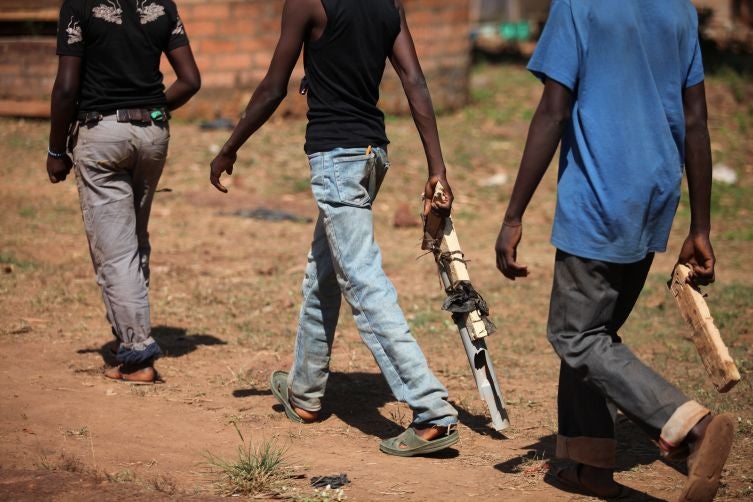Ten facts about child soldiers that everyone should know
Join the Independent's campaign to help child soldiers in the Central African Republic

Your support helps us to tell the story
From reproductive rights to climate change to Big Tech, The Independent is on the ground when the story is developing. Whether it's investigating the financials of Elon Musk's pro-Trump PAC or producing our latest documentary, 'The A Word', which shines a light on the American women fighting for reproductive rights, we know how important it is to parse out the facts from the messaging.
At such a critical moment in US history, we need reporters on the ground. Your donation allows us to keep sending journalists to speak to both sides of the story.
The Independent is trusted by Americans across the entire political spectrum. And unlike many other quality news outlets, we choose not to lock Americans out of our reporting and analysis with paywalls. We believe quality journalism should be available to everyone, paid for by those who can afford it.
Your support makes all the difference.This Christmas the Independent, working with Unicef, is campaigning to raise money on behalf of child soldiers in the Central African Republic. All the money we raise will go to helping Unicef negotiate the release of children from armed groups and to reintegrating them into their local communities. Here are ten facts about child soldiers that everyone should know.
• There are an estimated 300,000 child soldiers in at least twenty countries in the world today. As well as being forced to fight, children are used as spies, couriers, cooks and cleaners. Girls are often forced into sexual slavery.
• Some 40% of child soldiers are girls. They are often used as sex slaves, being taken as ‘wives’ by male combatants.
• The problem of child soldiers is most severe in Africa. Right now, children are fighting across the continent: in Chad, the Central African Republic, Sudan and South Sudan, Somalia and the Democratic Republic of Congo.
• There is a simple reason armed groups use child soldiers: children are easier to manipulate. They don’t each as much food, don’t get paid and don’t have a highly developed sense of danger, making it all too easy to send them into the line of fire.
• There are also plenty of new recruits. In many conflict-affected areas, children make up the majority of the population. There is a constant supply for armed groups, who often send children in the first wave of an attack so as to draw the enemy’s fire.
• Tackling the problem is hard: most of the groups who use child soldiers are so called ‘non-state actors’, anti government rebels and militias who are difficult to negotiate with. Many areas affected by conflict have no functioning government, adding to the challenges of reintegration.
• In spite of this, since 1998, over 100,000 child soldiers have been released from armed groups and reintegrated into their communities. Unicef has played a key part in this process across the globe.
• Between 2008 and 2009, Unicef helped to reintegrate more than 24,000 former child soldiers, showing what can be achieved.
• February 12 is Red Hand Day, a day of commemoration and campaigning across the world to draw attention to the plight of child soldiers.
The problem of boys and girls—some as young as nine—being forced into armed groups is not going to disappear tomorrow, but as little as 25 pounds can provide a child with everything they need to begin the process of recovery. Please give as much as you can.
Join our commenting forum
Join thought-provoking conversations, follow other Independent readers and see their replies
Comments